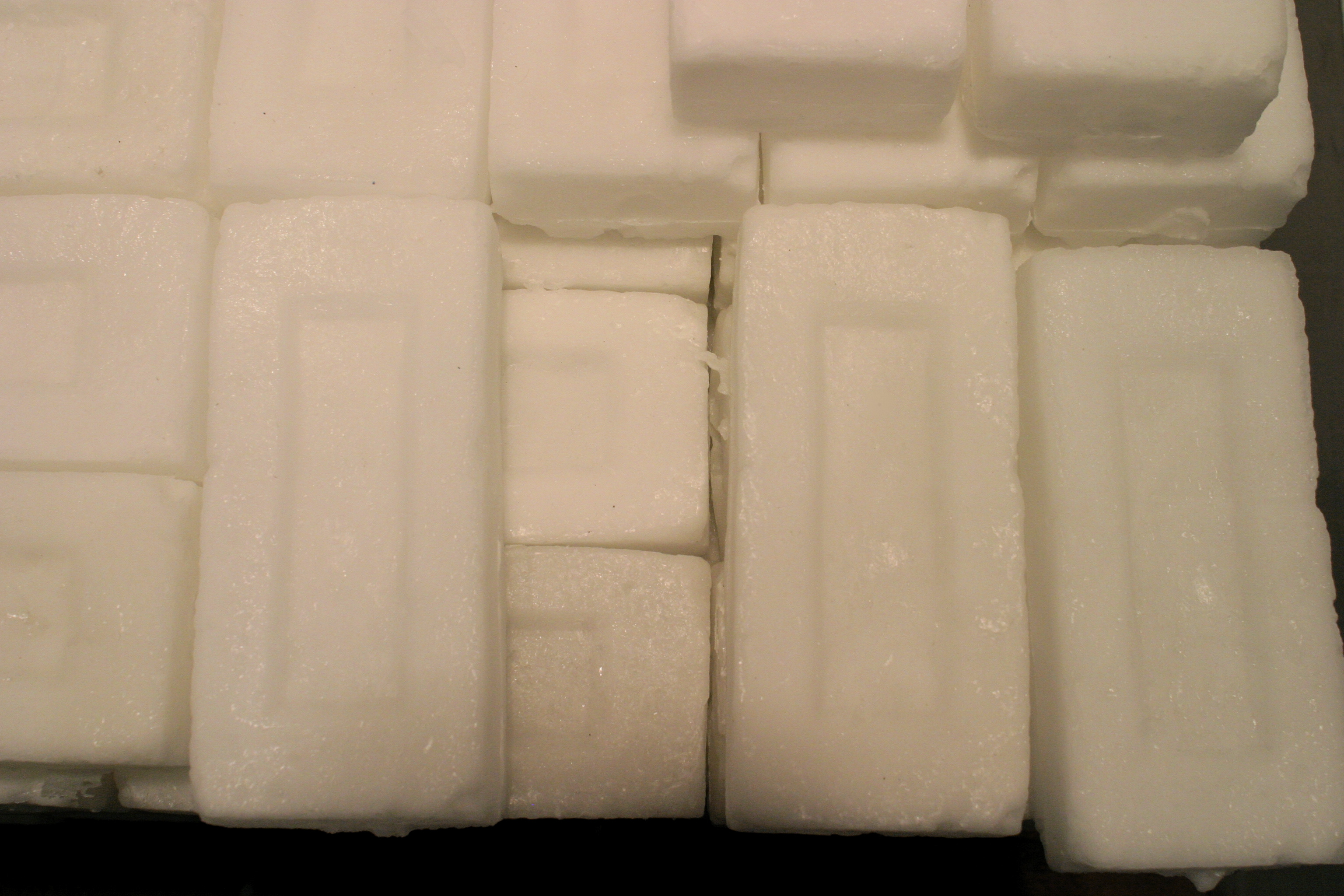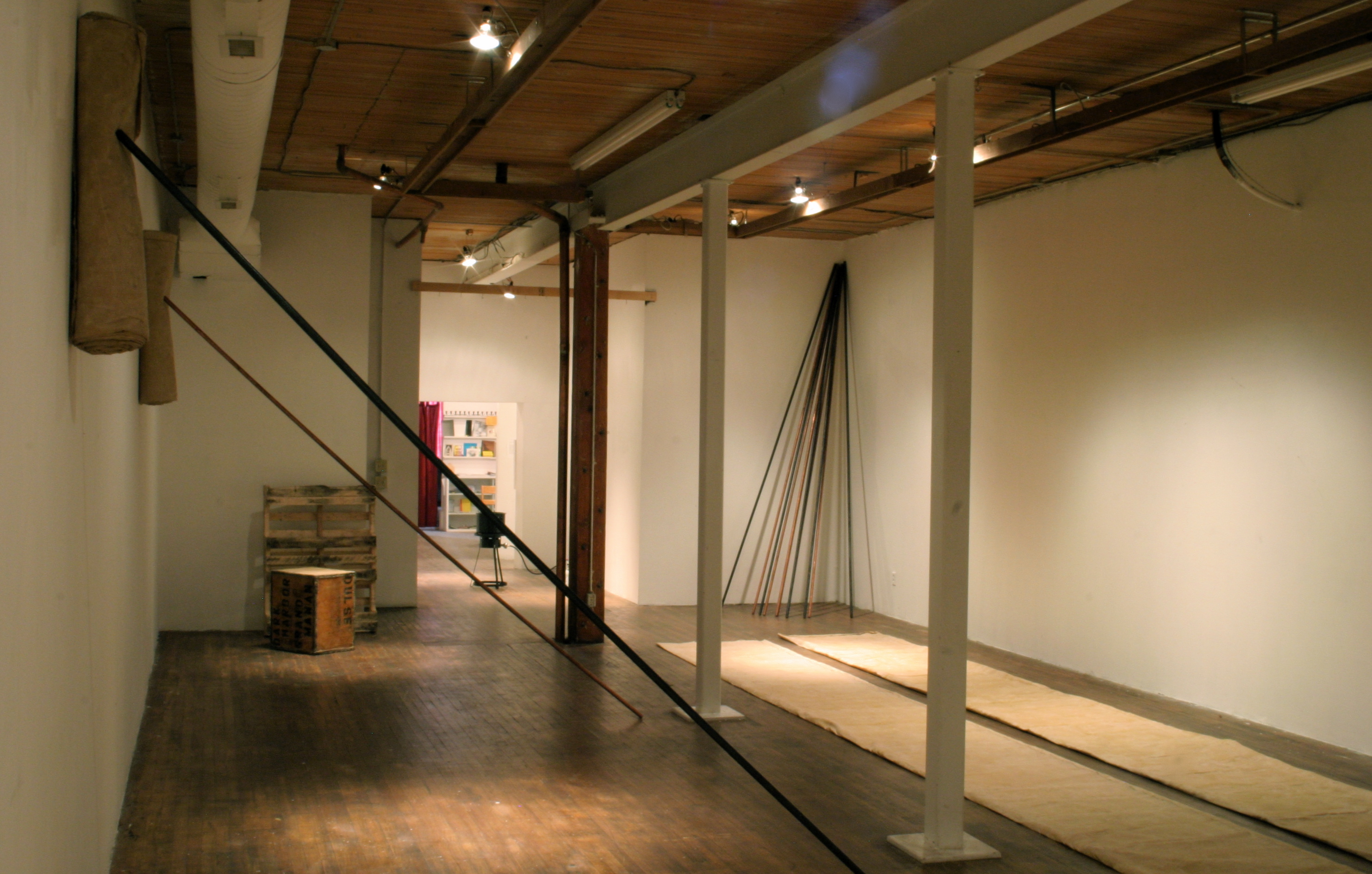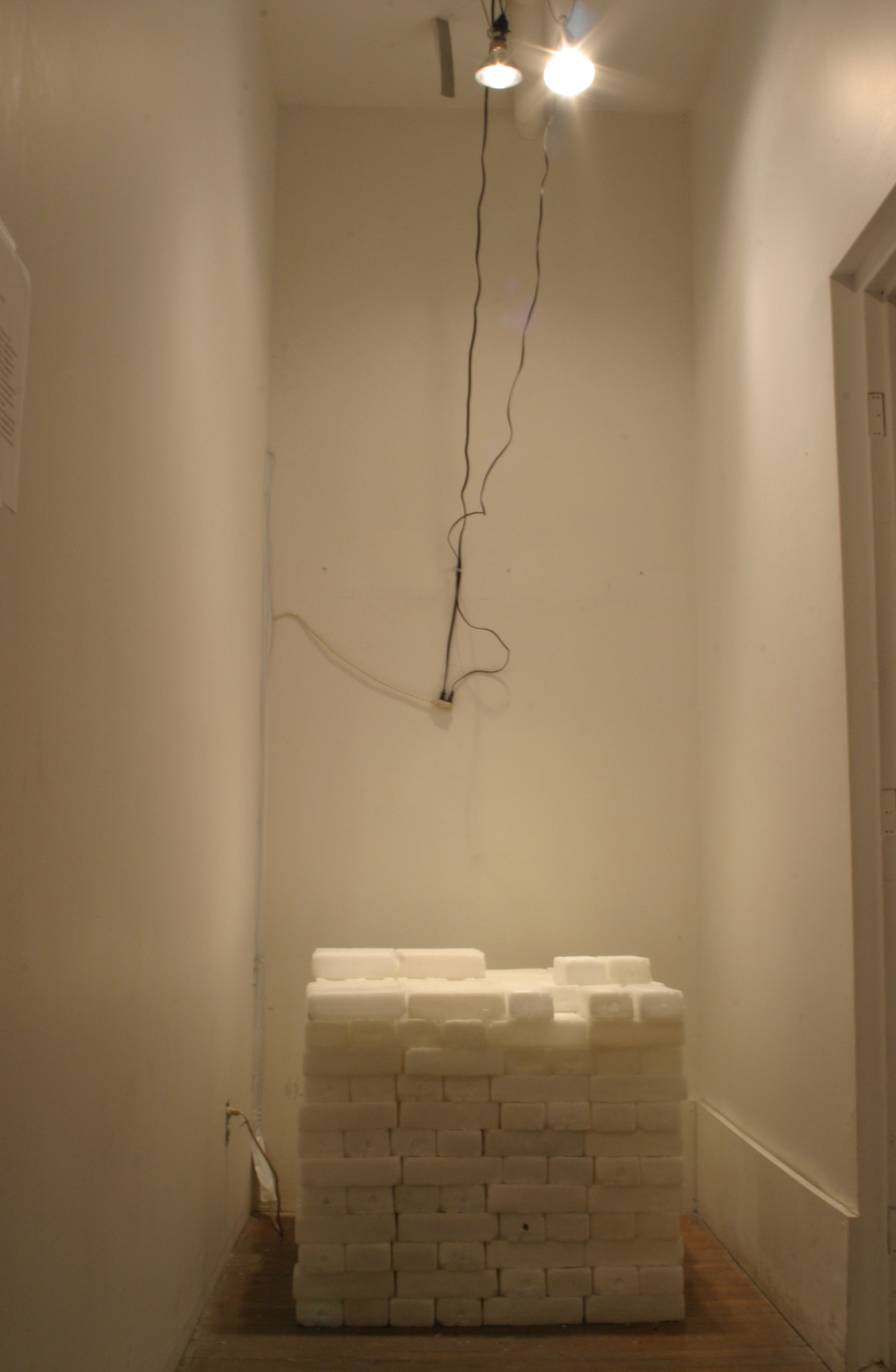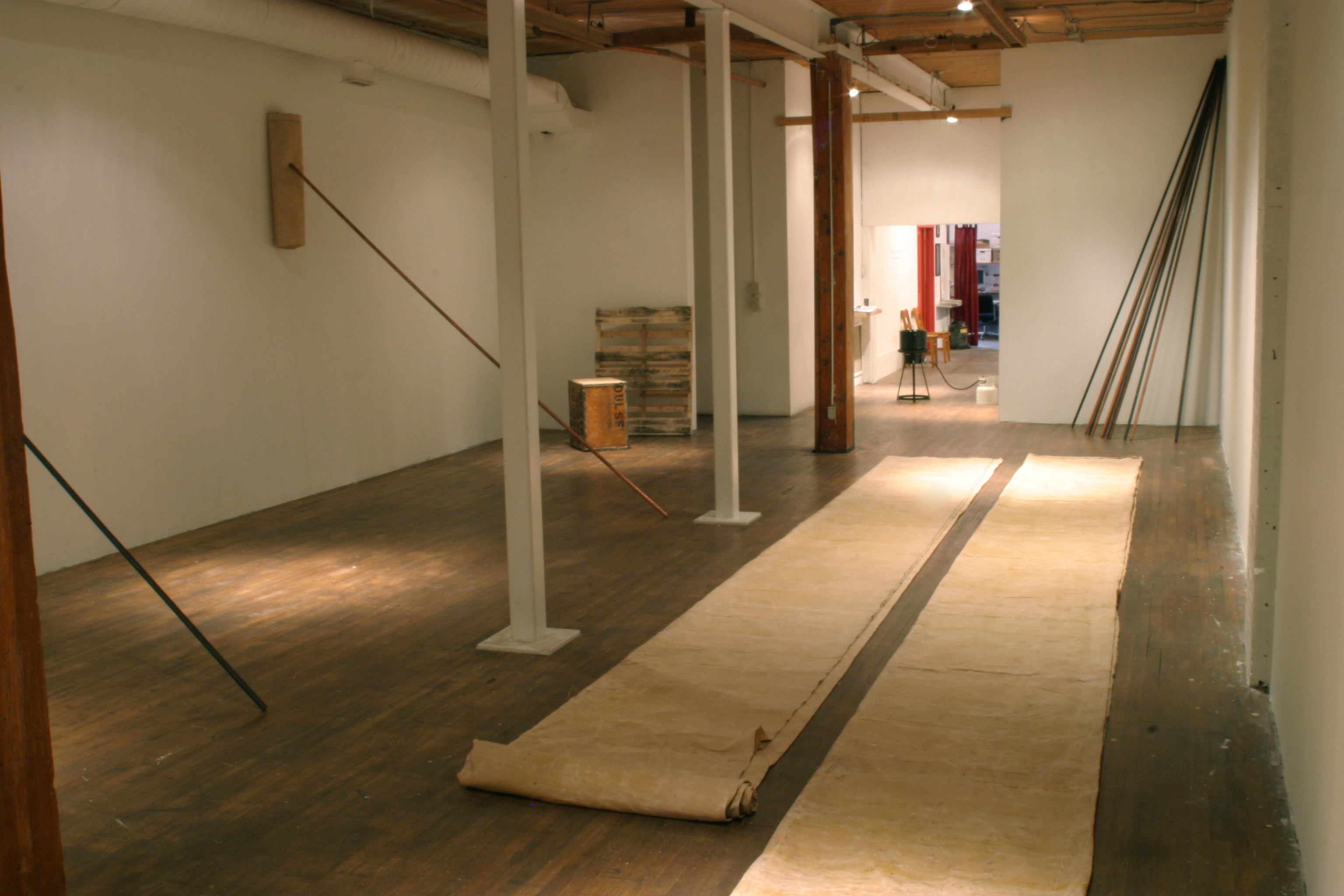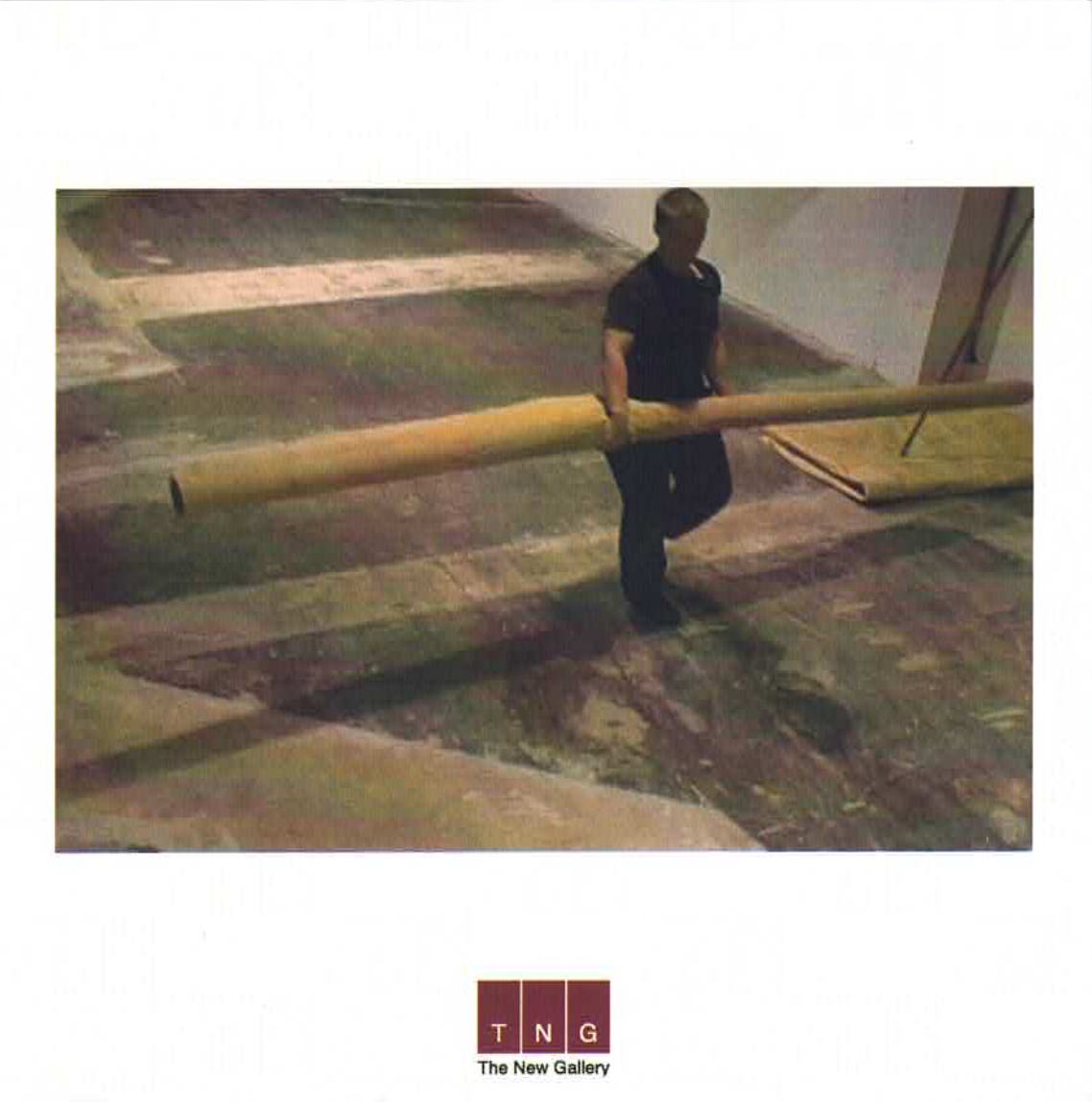
Lucy and Sartre
Jason W. Fowler Fitzpatrick
March 25 - April 23, 2006
‘There is neither fate nor misfortune, but forces to overcome.’ -Niurgun Bootor, Siberian folk hero
At the end of Roman Polanski’s film The Pianist (2002) we see the protagonist disappear from view into the detritus of what was once Warsaw. A similar passage inThe Rings of Saturn by the late German author W.G. Sebald recounts an anecdote about the reconstruction of German cities in the immediate aftermath of the Second World War. Salvageable bricks were collected from the bombed-out debris and systematically stacked amidst the refuse in perfect piles of a thousand, the one-thousandth brick positioned on end atop each pile denoting its finally tally.
Jason Fitzpatrick’s work addresses notions of ruination peripherally. Through an interactive process of establishing and refining spatiotemporal boundaries his work seeks to encompass the act of constructing and reconfiguring a place within the gallery where,for all intents and purposes, the activity of work itself is displayed and disseminated. Sculptural and performative interventions are orchestrated to harness, reorder and rebuild a kind of surrogate habitat. In this manner the very process of labour yields a sculptural environment in perpetually sustained rather than suspended animation.
This is poignantly addressed in the ongoing work entitled Sartre (2001), through the artist’s initiative of sending additional bricks to the gallery for the duration of the exhibition to be added to the installation in his absence. Rather like pieces salvaged from analogous ruins located elsewhere, the bricks become the physical manifestation of their own metaphoric transformation.
Fitzpatrick’s continual envelopment of the gallery and its occupants in a work entitled Lucy (2004) invites comparison with the various tent-like dwellings of nomadic peoples across the globe, thereby invoking a survival strategy for proposing alternate modes of aesthetic contemplation.
True metaphors are spatial in that they literally encompass the trajectory along which meaning is rendered manifest. What this in turn suggests is that work itself, this traversing from one orientation to another, is vital to the unveiling of metaphor. In Polanski’s film the aftermath of destruction is precisely that which sustains metaphor. The ruin as metaphor will generate scenarios for building anew because vision itself cannot be sustained without the apperception required to evoke change. In other words,metaphor is the phoenix that will precipitate the resurrection of ruinous structures.
Human enterprise invariably employs aesthetics to recover from catastrophe. The building of a tower of bricks, not unlike Inukshuks, grave markers or temple mounts, serves as both physical marker and visual testament to the potential for metaphoric regeneration. These traces of human endeavor culminate in the Great Wall, witnessed from a lunar vantage point, like a geographical scar on the earth’s surface.
Jason Fitzpatrick’s work invites these interpretations, by surpassing the inherently corporeal negotiation of space and time, and addressing the specifically peripatetic nature of inanimate bodies existing in tandem with bodies proper. Healing, usually thought of as a process of physical or psychological renewal or regeneration, might here be more generously reinterpreted as the means by which ethically conscious aesthetic action is both possible and sustainable.
- Roy Meuwissen
Jason W. Fowler Fitzpatrick
Jason Fitzpatrick graduated in 1993 with a Bachelor of Fine Arts from the Nova Scotia College of Art and Design in Halifax, Nova Scotia. A resident of Saint John, New Brunswick from 1996 to 2000, his work appeared in several exhibitions across Canada and was active in co-founding an artist-run centre. Jason moved to Vancouver in 2000 to pursue an Independent Research Grant (New Brunswick Government) and co-founded 536 Arts Society. In April 2004 Jason Fitzpatrick received a Masters of Fine Arts from the University of Windsor. Presently (2006) Jason Fitzpatrick lives and works in a studio in downtown Vancouver, is on the board of Access Artist Run Centre and is working on solo exhibitions in Vancouver, Alberta, New Brunswick and Ontario.

